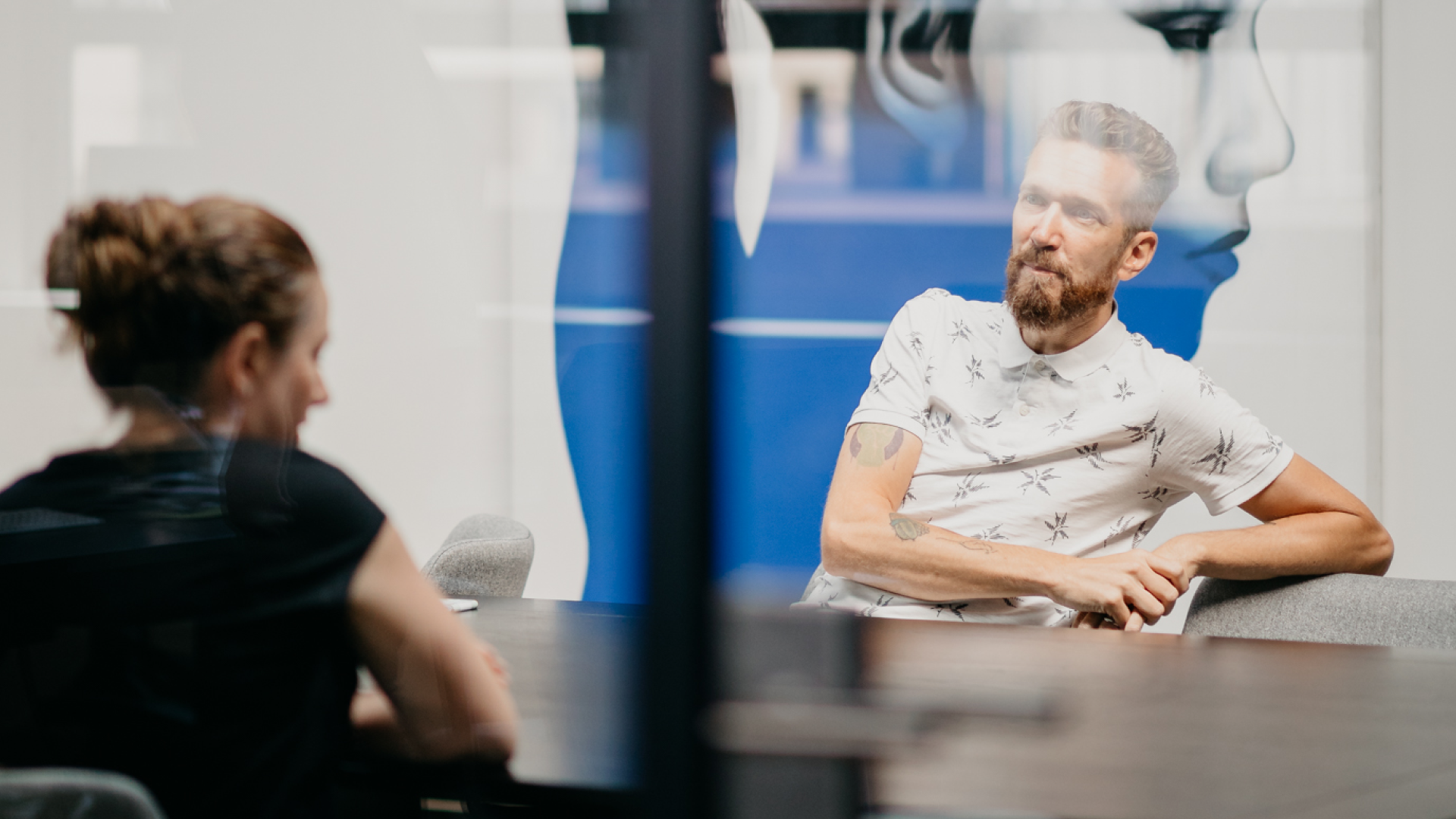Overlooked or essential? The benefits of paid social strategies for BFSI brands

Social media is a critical marketing tool for brand building, engaging customers, and driving action. But in banking, financial services, and insurance (BFSI), social platforms remain an overlooked and undervalued channel for many (often legacy) brands.
According to the American Bankers Association, banks are not taking full advantage of social media—most are currently using it primarily as a tool for communication, recruiting, and financial education. Out of those surveyed, however, 90% agree that social media is important.
Especially as young adults and teens increasingly turn to social media to seek information, find recommendations, and discover new products and services, BFSI brands are missing a major opportunity to engage, build loyalty with, and convert younger audiences.
Even more, BFSI organisations that don’t invest in paid social media tend to see lower organic traffic performance compared to their counterparts that do.
So, we took a look at the marketing strategies of 133 BFSI companies.
Unsurprisingly, the majority were investing in paid search, with higher spending correlating to greater traffic numbers. However, the findings of our paid social media analysis are a little more nuanced, providing insight into how the various social channels can help BFSI.
The value of a paid versus organic social strategy
Before we jump into the results, it’s important to understand impact from a social media perspective. It can be simplified down to reach and engagement: how many individuals is a brand reaching during a period of time and how many of those individuals are they actually making an impact on?
Reach represents the total number of unique users who have been exposed to a piece of content, post, or advertisement within a selected period. This metric indicates how aware people are of your brand and, unlike impressions or followers, it provides a more accurate count of the people you’ve impacted and helps estimate the size of your brand’s audience. Engagement rate by reach represents the sum of interactions (varying by social platform) a post has gained from the viewers it reached.
Having said this, the percentage of organic reach on social media platforms is relatively narrow or decreasing as compared to the scale of the audience. From 2023 to 2024, Instagram’s organic reach declined by 18% to 7.6%, the third straight year it has seen a decline. Facebook saw a moderate increase, however, its reach remains low at 5.9% overall. Pairing this with the average engagement rates by reach, Instagram tops Facebook, at 4.6% vs. 1.5% organic engagement.
Altogether, this means that utilising organic posts alone has minimal impact on your overall audience.
This is because social media platforms don’t favour organic reach alone, but leverage a multitude of signals such as user engagement, relevance, timing, frequency, recency, and watch time to deliver the most relevant content to consumers, ensuring they continue scrolling.
Pairing an organic social media strategy with one that takes the opportunity even further via paid empowers BFSI brands to connect deeply with their audiences, at scale. Learning from what works from an organic perspective only helps to strengthen your paid strategy.
Facebook is the preferred social platform for 95% of banks
Leading the pack in usage, Meta apps Facebook and Instagram provide social connections to over 3.05B global users monthly. They’re also popular with 52% of the brands analysed in our research—and according to a 2023 ABA survey, Facebook is the preferred social platform for 95% of banks.
Our research found that brands that use paid advertising on Meta apps see a 64% increase over the average number of organic clicks monthly. The combined power of these two platforms provides a significant driver for conversions and overall growth, especially in international markets for companies growing into a multinational phase that need to build brand recognition in new areas.
For BSFI brands to garner the most successful results on these platforms, leveraging native-looking ad content, utilising user-generated content (UGC), and working with content creators are powerful ways to lean into authenticity and drive engagement.
For B2B BFSI advertisers in particular, ensuring content is in a vertical format—preferably video—and aligns to the platform’s proven best practices, such as those for Reels and Stories, drives the most success.
52%
Of BFSI brands analysed use Meta Apps
+64%
Organic clicks monthly for brands using Meta
95%
Of banks prefer Facebook over other platforms
X may still be useful for organic search
Given the mass exodus of users and advertisers from Twitter when it became X, it’s not entirely shocking that only 24% of the BFSI brands we reviewed use it. Although the future of the platform remains uncertain, it can still offer benefits to advertisers. Among the companies advertising on X, we saw an average 37% increase in organic clicks outpacing those that choose to avoid by several hundred thousand clicks a month.
Only 14% of BFSI brands we analysed used TikTok advertising
Since its explosion in popularity in the early 2020s, TikTok has only continued to grow as an effective link between brands and audiences. What began as a platform full of dancing and lip-syncing videos mainly used by younger millennials, Gen Z, and eventually Gen Alpha, has morphed into a beloved (albeit sometimes controversial) channel for connection, humour, learning, and discovery.
From user-generated and influencer content to sponsored ads to TikTok Shop, there’s no shortage of avenues for brands to engage with users on the app. As TikTok’s search engine continues to ramp up at a rapid pace, additional engagement signals allow brands to target engaged audiences actively seeking relevant content spaces for brands to step into.
Yet still, out of all the BFSI companies we analysed, only 14% were using advertising on TikTok. This low utilisation becomes more surprising as we found brands that did use TikTok ads saw an average of 170% more monthly clicks from organic channels than the overall average.
Although the future of TikTok has been the subject of derision and debate for some time, it remains an untapped resource for the majority of BFSI brands. We see it as a rapidly growing platform for B2B, reaching 81% of medium and enterprise-level business decision-makers.
14%
Of BFSI brands analysed use TikTok
+170%
Organic clicks monthly for brands using TikTok
81%
Of B2B decision makers use TikTok
LinkedIn offers BFSI brands a 2x higher conversion rate
The ultimate social channel for connecting with professionals and other businesses, 83% of the BFSI organisations we examined are already advertising on LinkedIn. However, these advertisers saw the least amount of lift on the organic front—garnering only about 5% more clicks on average compared to all brands.
It’s important to keep in mind that, from a paid perspective, LinkedIn tends to be more expensive than other social platforms, typically due to its more niche nature. But it remains critically important for BFSI brands, as users are twice as likely to look for financial advice on LinkedIn than any other platform, and 1.7 times more receptive to brand messaging. All the while, the platform offers up to a two-times higher conversion rate—making this the platform to get right, first.
Especially for B2B BFSI organisations, paid marketing on LinkedIn is a necessity. It has continued to build out its capabilities to reach key decision-makers.
From the ability to upload company lists to LinkedIn’s first one-click B2B audience that combines the power of LinkedIn’s Economic Graph + Buyer Intent signals for a given product category, accelerating interest through the funnel by taking the guesswork out of who your B2B target audience is and reaching people who may be interested in your product. These unique offers from LinkedIn allow businesses to not only nurture their current leads but find new prospects and introduce them to the brand.
Realising the power of social media for BFSI
For BFSI organisations, the incremental value of a paid social media strategy has long been understated, and we’ve seen it firsthand. DEPT® partnered with a leading financial services company to tackle the challenge of proving the incremental value of its upper funnel media. Our goal was to help them understand the effectiveness of their advertising efforts and identify the channels driving the most impact.
We implemented a matched market test design, combining iterative pairing processes with AA testing. By removing paid social advertising within the test market geographies, we could isolate the impact of upper-funnel media on the brand’s marketing performance.
The results were enlightening. We observed a significant incremental impact across both paid and organic channels, indicating that the brand’s upper funnel media efforts were not only driving direct conversions but also influencing organic traffic and engagement. Interestingly, we found that nearly half of the paid social incremental impact was attributed to other channels, emphasising the interconnectedness of their marketing efforts.
Even more, we identified a 43% incremental halo effect and a remarkable 22.7% incremental lift in Marketing Qualified Leads (MQLs). These findings showcase the broader influence of upper-funnel media on the business’ marketing performance and ability to attract high-quality leads.
So, is every platform right for your BFSI brand?
In short, probably not.
Like any marketing channel, what works for some brands won’t be as effective for others. And when it comes to paid social media, some platforms simply don’t make sense for some organisations—even if it does look like there’s a space to fill (looking at you, X and TikTok).
For most organisations, it would be remiss to not have a presence on LinkedIn or Meta. However, the lesser-used platforms for this industry require additional consideration.
It’s critical to take into account factors like your target customer, whether the app is a fit for your brand (let’s be honest, not every legacy banking or insurance institution is going to feel authentic on TikTok), and if you have the structure in place to measure the effectiveness of your paid social efforts. If these underutilised platforms are indeed a good brand fit, know that you have lots of opportunities to reach new audiences.




